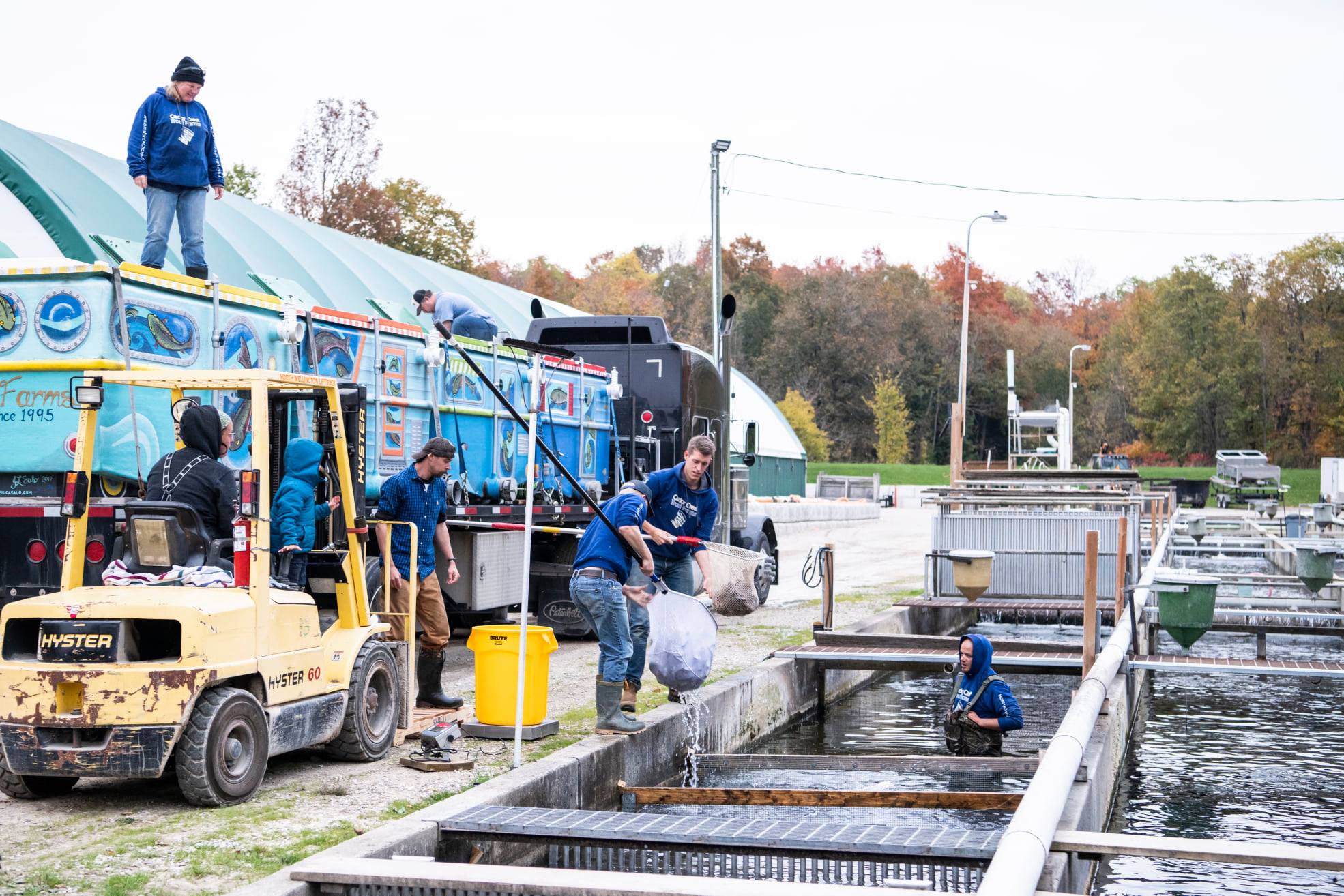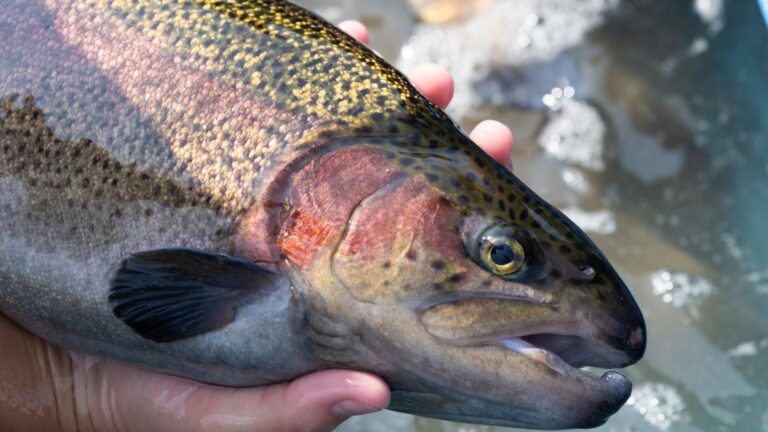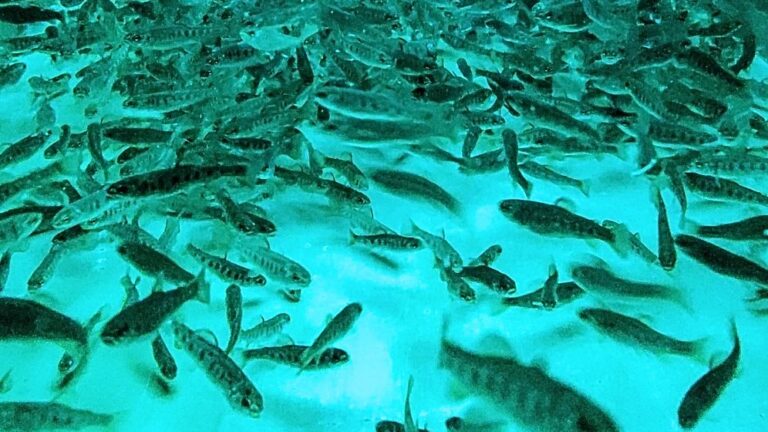
We get a lot of questions about this documentary. We want you to keep feeling good about eating local fish, so here’s our thoughts!
Seaspiracy is from a guy who is very passionate about oceans. And we get it, our family’s been passionate about protecting our nearby rivers and lakes for two generations.
And for most of the film, we got excited about the claims he made. He focused on a major double-standard when it comes to fish: that people think wild is good, and farmed is bad.
He encouraged people to question where their wild fish is coming from… maybe for the first time ever. ![]()
Fish farms operate with a high level of scrutiny. We have more regulators and stricter standards than most other natural resource or agriculture sectors, and we always have the watchful eye of the public and the media.
This scrutiny has been good. It prompts us to get better, to limit our impact, to conduct environmental studies to prove what we’re doing, and to invite auditors that make sure we’re farming in the best interest of our fish, our planet, and our community.
But it’s disheartening when folks are so skeptical of fish farms, yet never ask the same questions about wild fish.
There are plenty of well-managed wild fisheries, but Seaspiracy showed us plenty are questionably managed. They can have devastating environmental impacts, human rights abuses and polluted water.
But fish farms are just as complicated. There are plenty of well-run fish farms with ethical practices, and there are others with unsavory standards that aren’t sustainable or safe.
How do you tell the difference? The best tool is reputable eco-certifications — Best Aquaculture Practices, Marine Stewardship Council – MSC, ASC – Aquaculture Stewardship Council, & Ocean Wise — they aren’t perfect, but they’re the best we have.
We’ve walked through how rigorous BAP audit are in the past, and we know firsthand how strict MSC audits are for our pickerel: https://www.facebook.com/springhillsfish/posts/3732326310157089
But hey, what about the things Seaspiracy said about fish farms? Here’s a couple things they didn’t exactly get right:
- Farmed fish eat wild fish, so they aren’t sustainable — FALSE! Fish do need a lot of protein, but we can get that from reclaimed sources (meaning parts of the animals leftover from processing)
Plus a wild salmon eats 7lbs of other fish to make 1lb of meat, and tuna eat some 34lbs! Farmed fish need somewhere around half a pound, and it can be reclaimed fish!
More: https://www.facebook.com/springhillsfish/posts/3928407577215627 - Farmers dye the fillets orange — FALSE! That colour in the fish comes from astaxanthin, which is an antioxidant that helps them uptake vitamins. You can buy at the health food store for you too!
More: https://www.facebook.com/springhillsfish/posts/3884479371608448 - Raising fish in open-water nets is bad — NOT NECESSARILY FALSE! There are good net-pen farms out there. For instance, a decade-long study here in Ontario showed that the net farms in Georgian Bay can increase wild fish populations.
Plus Seaspiracy said that 50% of fish are raised in net pens, but doesn’t that leave another 50% of fish farms the documentary didn’t talk about at all?
The unfortunate end to the documentary was that we shouldn’t eat fish at all, and we should be vegan. We were sad at this conclusion as it’s unlikely and unhelpful for most of us, and it watered down all the good work he did teaching us the right questions to ask about wild or farmed fish. ![]()
If you buy local fish — and check that it’s eco-certified — then no matter where it comes from, you know you’re eating one of the healthiest, most planet-friendly proteins out there! ![]()
You’re doing good by the planet, by your body, and by your ethics and local community! We love when you ‘cast’ tough questions our way, so keep them coming! ![]()

